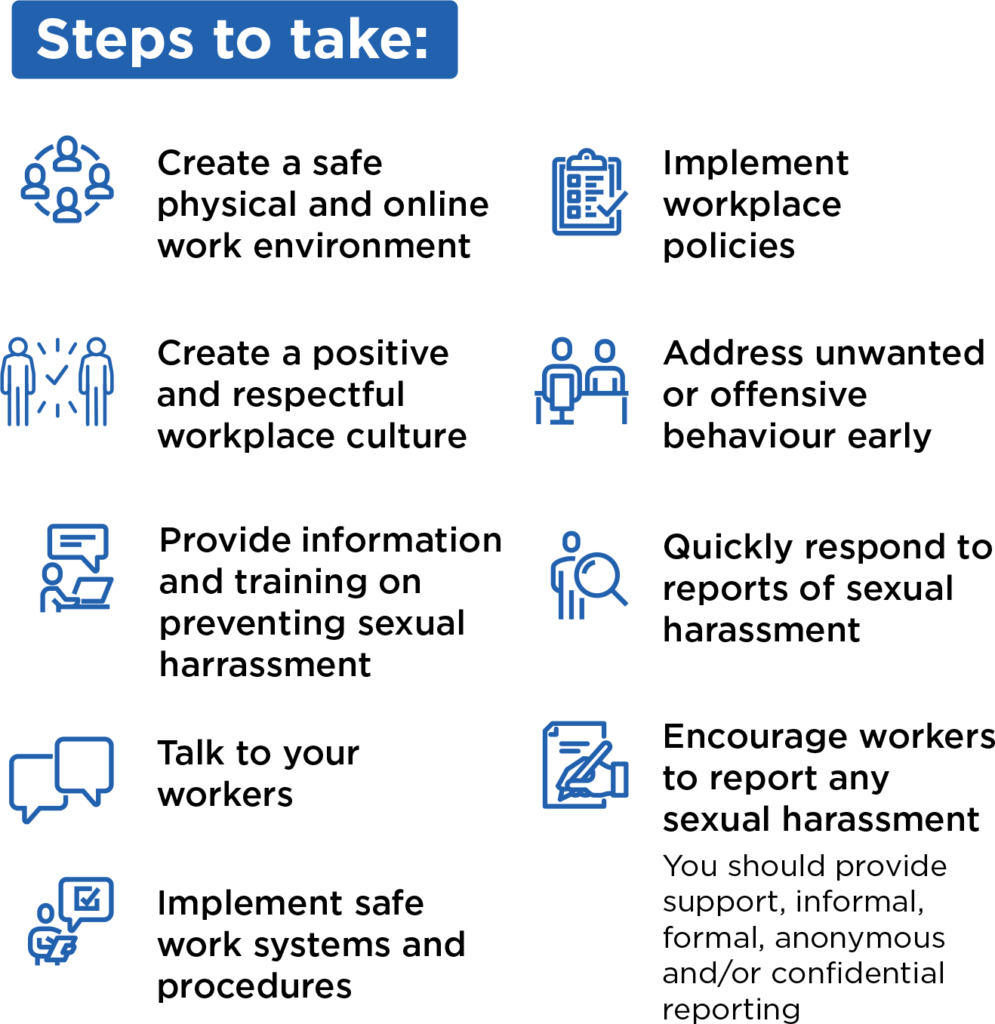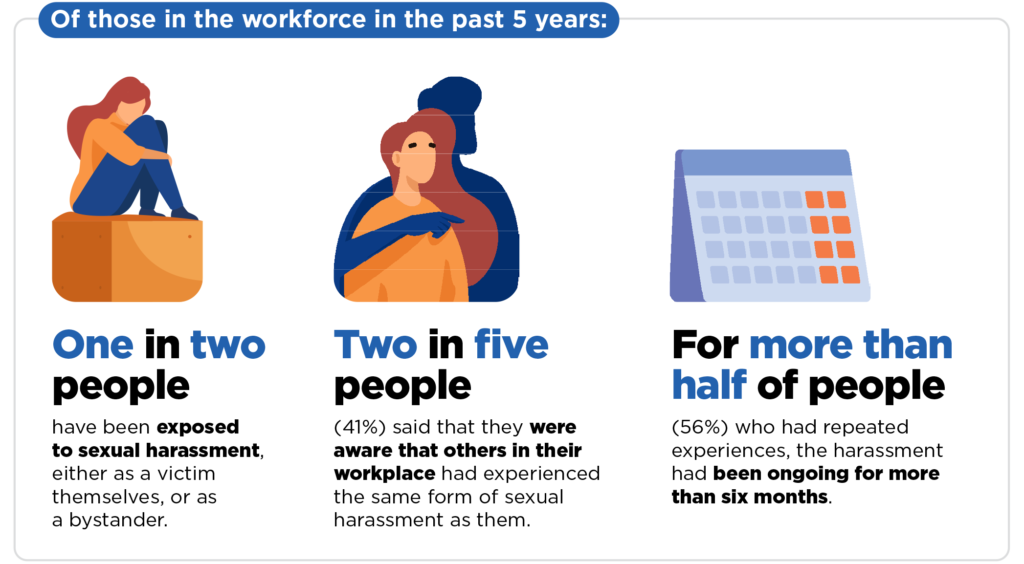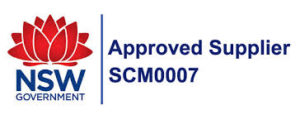[vc_row][vc_column][vc_column_text]Sexual Harassment is not a new topic, but it is one that is gaining momentum after several recent inquiries into workplace sexual harassment across multiple industries, following the National Inquiry into Sexual Harassment in Australian Workplaces.
The Australian Human Rights Commission inquiry into workplace sexual harassment, began in 2018. Following this in March 2020, the Australia’s Sex Discrimination Commissioner delivered the Australian Human Rights Commission report of the National Inquiry into Sexual Harassment in Australian Workplaces, with recommendations about:
- its prevalence, nature and reporting in Australian workplaces;
- the role of technology;
- its drivers, including risk factors for population groups or in different workplace settings;
- the current legal framework;
- existing measures to address it and examples of good practice;
- its impacts on individuals and businesses, including its economic impact.
Duties under Work Health and Safety laws require a persons conducting a business or undertaking (PCBU) to do all they reasonably can to prevent sexual harassment. Sexual harassment is a known cause of physical and psychological harm. Penalties for failing to meet WHS duties include fines and jail terms for the most serious breaches.
 Safe Work Australia have responded by releasing resources including infographics to help PCBU’s better manage and understand their WHS duties to ensure workers and others are not exposed to risks to their health and safety as a result of sexual harassment within the workplace.
Safe Work Australia have responded by releasing resources including infographics to help PCBU’s better manage and understand their WHS duties to ensure workers and others are not exposed to risks to their health and safety as a result of sexual harassment within the workplace.
Unlike bullying, which is repeated behaviour, sexual harassment is not always obvious, repeated or continuous. Sexual harassment can be a one-off incident which can be unwelcome conduct of a sexual nature which makes a person feel offended, humiliated or intimidated.
Sexual Harassment can happen at a worker’s usual workplace or in other places where they work. It can also happen during a work‑related activity such as a work trip, conference or an event. Sexual harassment can harm the physical and mental health of the person it’s directed at, as well as those who witness it. This can lead to feelings of being alone and isolated; confidence loss and withdrawal; stress, depression, anxiety and post-traumatic stress disorder (PTSD); and physical injuries from assault.
For more information and resources visit the Safe Work Australia website.
Source: Safe Work Australia, January 2022[/vc_column_text][/vc_column][/vc_row][vc_row][vc_column][vc_images_carousel images=”781224,781226,781227,781228,781229″ img_size=”large” slides_per_view=”4″ css_animation=”fadeInDown”][/vc_column][/vc_row]


 Safety Australia Group
Safety Australia Group